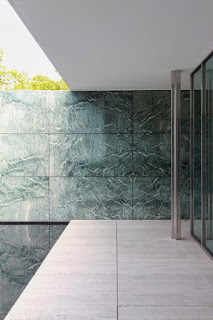Whether you’re
building a new home or renovating your current abode, there are plenty of
important decisions to make along the way. Many of these decisions will be
about the materials you use. Ideally, your materials should be durable so that
you get your money’s worth, along with getting the look that you want.
Stone, particularly marble, has long been a favourite for a range of purposes in homes. It can make for a great statement piece, like a kitchen or bathroom counter, or be used for some stunning floor tiles to create a luxurious and grand space.
However, with advances in modern technology, there is now an extra decision for you to make if you’re considering marble for your home. And that is whether to choose natural or engineered marble. So that you can make an informed choice, we’ve put together this handy list about these two choices, along with their pros and cons.
How are they formed?
- v Natural marble
Natural marble is a metaphoric rock that is formed when limestone is exposed to intense pressure and heat. Under these conditions, the limestone recrystallises as a hard rock (marble). The colour and veins of the marble are affected by the other minerals present. For instance, a white marble with few veins will have had few other minerals in it when it recrystallised.
- v Engineered marble
Engineered marble, as suggested by the name, doesn’t form naturally. It’s made by mixing crushed quartz with resin. This is then compressed and heated to form the desired marble. With engineered marble, designers can relatively easily create a specific marble, including colour and veins.
Pros
- v Natural marble
Looks good: With its unique colours, patterns and mirror-like shine, natural marble is a simple way to bring an air of elegance to your home. It also looks fantastic with any number of styles and other materials.
Luxury:Along with looking great, natural marble is synonymous with luxury. Its timeless and high-luxury look is something engineered marbles have yet to fully capture.
Durable: Since it is a natural stone, marble is durable to a degree. While not the hardest stone available, it can still be tough.
- v Engineered marble
Strong and durable:Like natural marble, engineered marble is also a strong and durable material.
Manufacturedto suit a project: Since engineered marbles can be designed, you can get a specific look, including colour and patterns. These can be easily achieved and are more readily available than natural alternatives.
Scratch and stain-resistant:Engineered marble has been designed to be scratch- and stain-resistant than natural marble. As a result, it can be a better choice than natural marble in certain homes and situations.
Cheaper: Manufacturers can replicate the look marble with little difficulty to create engineered marble. Depending on where you are, it can even be locally made, reducing shipping costs.
Cons
- v Natural marble
Expensive:It’s no secret that marble can be expensive. The price of natural marble can also vary depending on the type of marble you choose. For instance, Carrara and statuario marbles can be very expensive.
Susceptible to scratches and stains:Although natural marble is a stone, this doesn’t mean it is completely durable. Marble is actually regarded as a soft stone and is therefore more easily scratched and stained than you may have initially though. Therefore, it may not be the best choice for areas that see a lot of wear and tear or regular foot traffic.
Limited supply: Part of what makes marble seen as a luxury material is that it is in high demand but short supply. Some marbles only come from one or two quarries in the world, for instance. Therefore, you may need to be prepared to pay a lot for the marble you want or consider another kind.
- v Engineered marble
Patterns aren’t that unique or deep:The way that natural marble is formed, it creates unique patterns and colours. However, this is not always possible to replicatein engineered marble. Therefore, if you’re using large amounts of engineered marble you may see patterns and veins repeat.
Similarly, the veins and colours may not be as deep or vibrant in engineered marble as in natural marble.
Can fade and may not be UV stable: When exposed to direct sunlight, engineered marble may start to fade and lose its colour. Some engineered marbles may not be UV stable and therefore shouldn’t be used outside or in direct sunlight.
Seams can be visible:If you want to use a large amount of engineered marble, along with repeating patterns, you may also see the seams between each slab. This is because engineered marble can only be made to a certain size, while natural marble can be cut to just about any size. As a result, you may not get quite the flawless look you want.
So, which one is better?









 Erika Rhein, the contributing author and the professional blogger by profession. With years of experience, I now focus on writing blogs on varied niches. Being a research enthusiast, I like to provide my readers with the useful and informative articles on the different topics they are looking for. I aim to create a difference through my writing.
Erika Rhein, the contributing author and the professional blogger by profession. With years of experience, I now focus on writing blogs on varied niches. Being a research enthusiast, I like to provide my readers with the useful and informative articles on the different topics they are looking for. I aim to create a difference through my writing.
0 Comments